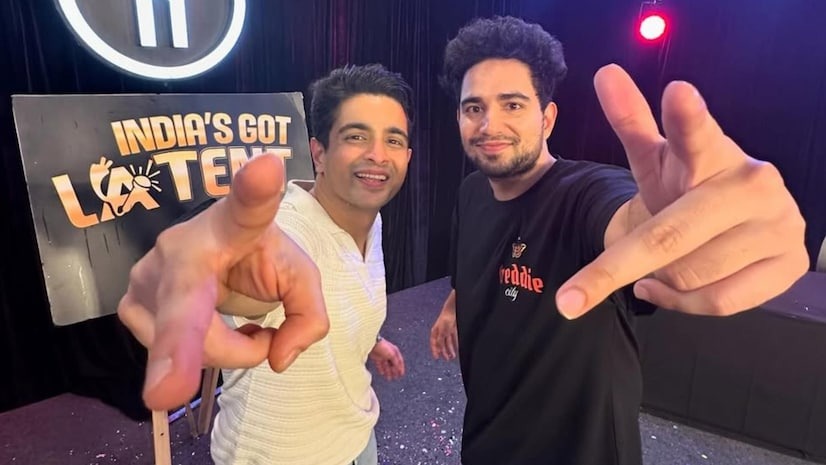“Would you rather watch your parents have sex every day for the rest of your life or join in once and stop it forever?” these were the words of Ranveer Allahbadia said on the show India’s Got Latent. This statement triggered a massive uproar in the society, sparking intense debates about the limitation and scope of free speech and obscenity, and the balance between morality and freedom of expression. The controversy has once again raised critical legal and ethical questions: Where should the line be drawn between free speech and offensive content? How do Indian laws define and regulate obscenity? And to what extent should free speech be protected when it clashes with societal norms, decency and morality? We will examine these issues in this article through the lens of Indian legal jurisprudence, focusing on the Hicklin test and the broader debate surrounding free speech and censorship.
The Evolution of Obscenity Law
Ranveer Allahbadia, a YouTuber and influencer, found himself in the limelight after making some comments deemed to be obscene and offending in the eyes of the people. This incident raises significant questions in law:
- What qualifies as ‘obscenity’ under Indian law?
- How and when does the law identify speech crossing the bounds?
- What is the function of free speech in the case at hand?
The definition of obscenity is provided in Black’s Law Dictionary as a state of being obscene, defining a type of conduct tending to corrupt the morals of the public in indecency and lewdness.
Indian courts historically relied on the Hicklin test, established in the English case Regina v. Hicklin and developed by Justice Cockburn. Under this test, courts could evaluate isolated portions of content to determine whether it had any literary or non-obscene merit. If any part of the material had the potential to “deprave and corrupt” those who were susceptible, it was deemed obscene. This rigid interpretation often led to heavy censorship, even a handful of words in a 400-page book could render the entire work obscene.
One such major case elucidating the concept of obscenity under Indian jurisdiction is Maqbool Fida Hussain v. Raj Kumar Pandey. In the said case, a number of petitions were made against a painting made by the iconic artist M.F. Hussain. The painting was symbolically representing India in the form of a nude woman figure with flowing hair representing the Himalayas. The painting was entitled Bharat Mata and was auctioned on the net by a non-profit organisation in order to collect donations in the name of earthquake victims in Kashmir. The court gave a favorable judgement in favor of M.F. Hussain and declared that the painting was not the test of obscenity. In his judgement, the judge eloquently portrayed the concept that artistic taste is not under protection under the law in the absence of intent to deprave and corrupt.
In Ranjit Udeshi v. State of Maharashtra, the Supreme Court upheld the Hicklin test, ruling that anything with the potential to corrupt public morality could be classified as obscene. However, in the years that followed, courts gradually moved toward a more nuanced approach, emphasizing the overall meaning and intent of the content rather than focusing solely on isolated words.
In Aveek Sarkar v. State of West Bengal, the Supreme Court moved away from the Hicklin test and adopted the Community-Standard Test as a guiding parameter in defining obscenity in a given societal context. The test requires whether a piece is obscene is to be determined in accordance with societal attitudes and what a prudent person would believe. The Court undertook a comparative legal inquiry, taking cognizance of the fact that in American jurisprudence, the Court acknowledged “Obscenity” as an exception to the absolute freedoms provided by the American Constitution in the case of Chaplinsky v. New Hampshire
The Conflict with Free Speech and Censorship
India’s Constitution provides the right to speech and expression under Article 19(1)(a). However, Article 19(2) allows reasonable restrictions in the interest of morality, decency, and public order. This raises a complex conflict—should the state’s responsibility to uphold public morality take priority over a citizen’s right to express controversial opinions?
The case of Bobby Art International is judicial precedent in such a matter. The issue was in a state of controversy over obscene scenes in the film Bandit Queen, a biopic on the life of Phoolan Devi, considered obscene by some petitioners. The Delhi High Court had originally imposed a ban on the exhibition of said film; however, the decision was reversed in the Supreme Court of India on grounds a film could not be banned on grounds of explicit or obscene matter. The Court observed the impugned scenes comprised a necessary and important part of the story and upheld the producers’ fundamental right under Article 19(1)(a) of the Constitution of India to free speech and expression. The judiciary felt where matter was necessary in order to convey a significant message, nudity and profanity could not be grounds on which suppression could be based. The court said “Nakedness does not always arouse the baser instinct. The reference by the Tribunal to the film ‘Schindler’s List’ was apt. There is a scene in it of rows of naked men and women, shown frontally, being led into the gas chambers of a Nazi concentration camp. Not only are they about to die but they have been stripped in their last moments of the basic dignity of human beings. Tears are a likely reaction; pity, horror and a fellow feeling of shame are certain, except in the pervert who might be aroused. We do not censor to protect the pervert or to assuage the susceptibilities of the over-sensitive. ‘Bandit Queen’ tells a powerful human story and to that story the scene of Phoolan Devi’s enforced naked parade is central. It helps to explain why Phoolan Devi became what she did: rage and vendetta against the society that had heaped indignities upon her”.
In determining a finding on whether a piece of work is obscene, the court has always adopted a position where a consideration in totality and not in fragments is called for. The judiciary has emphasized the need for balancing the freedom of speech and expression and the law on obscenity and declared that where artistic value and obscenity are in confrontation with each other, artistic value would have to prevail substantially over what is said to be obscene. The court has categorically concluded that nudity alone is not enough to cross the legal definition on obscenity.
The provisions related to Obscenity are Sections 67, 67A, and 67B of the Information Technology Act which are similar in nature to the provisions of Sections 292, 293, and 294 of the Indian Penal Code, which have now been replaced by Sections 294, 295, and 296 of the Bharatiya Nyaya Sanhita.
Section 67 of the I.T. Act, 2000 states that “Whoever publishes or transmits or causes to be published or transmitted in the electronic form, any material which is lascivious or appeals to the prurient interest or if its effect is such as to tend to deprave and corrupt persons who are likely, having regard to all relevant circumstances, to read, see or hear the matter contained or embodied in it, shall be punished on first conviction with imprisonment of either description for a term which may extend to three years and with fine which may extend to five lakh rupees and in the event of second or subsequent conviction with imprisonment of either description for a term which may extend to five years and also with fine which may extend to ten lakh rupees.”
The provision has been widely debated and criticised. One criticism is the inclusion of adjectives such as “lascivious” and “prurient interests” without defining them in a statutory way, and consequently keeping the provision vulnerable to subjective interpretation. The legislative imprecision has raised apprehensions about misuse and arbitrary enforcement.
Judicial pronouncements have identified situations where Section 67 has been invoked in a sweeping and arbitrary manner, resulting in excessive restrictions on freedom of speech and expression.
In Apoorva Arora v. State (NCT of Delhi) also referred to as the College Romance Web Series Case. In the aforesaid case, the Supreme Court quashed investigation and prosecutive proceedings initiated against producers of the web series College Romance (produced by TVF Media Labs Private Ltd.), who had been accused under Sections 67 and 67A of the I.T. Act for sending and publishing obscene and sexually explicit matter. The Delhi High Court had already declared against the producers; however, the order was overturned in the Supreme Court on the grounds that the legal issue was misconceived and a wrong conclusion was made. The Court made explicit the fact that vulgarity and profanity are not necessarily synonymous with obscenity and a balanced consideration in the context is called for. The judicial understanding stressed the fact that the utterance of explicit words without intent to deprave and corrupt is not sufficient under the definition of obscenity. The Court added the fact that such words are also frequently used in order to express sentiments such as annoyance, frustration, or high spirits and not in order to arouse prurient interest. In the said case, the matter was a light-hearted depiction of life in a college and was not a fit case under the I.T. Act.
The judiciary has recognised on numerous occasions that Section 67 has been invoked in order to muzzle legitimate artistic and literary expressions. Various judicial precedents identify misuse of the provision in order to muzzle speech that is constitutionally protected. In S. Rangarajan v. P. Jagjivan Ram, the Supreme Court said that disapproval of a particular group is not a sufficient reason on which free speech could be curbed. The Court stressed yet again that restrictions on speech under Article 19(1)(a) need strictly to conform with the restrictions specified in Article 19(2) and need to be based on a compelling state interest.
While obscenity laws play a crucial role in maintaining public decency, excessive restrictions on speech risk leading to censorship and stifling creative expression. This makes it essential to adopt an approach that balances both interests without compromising the essence of either.
The doctrine of harmonious construction provides a legal framework to strike this balance, ensuring that both free speech and obscenity regulations coexist without undermining each other. The judiciary’s evolving stance from the rigid Hicklin test to a more flexible community standards approach suggests that context, intent, and artistic value should be the primary considerations. We see how societal perceptions of obscenity are constantly evolving, making rigid definitions impractical and often outdated. Overly broad or ambiguous obscenity laws also pose the risk of arbitrary enforcement, leading to selective targeting and misuse. Ultimately, a balanced strategy is necessary to uphold public morality while protecting individual freedoms in a democratic society.
Author : Shivam Shandilya
law student of LLM at Baba Saheb Bhim Rao Ambedkar University, Lucknow, a central university









